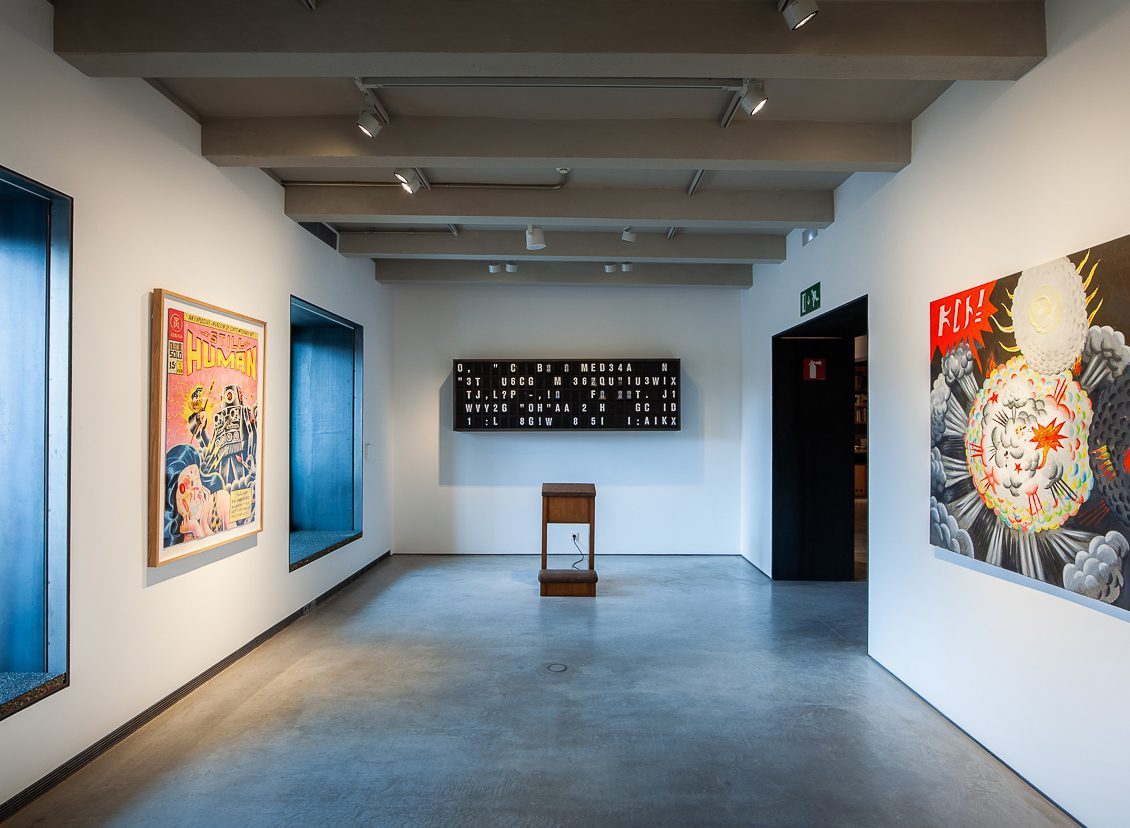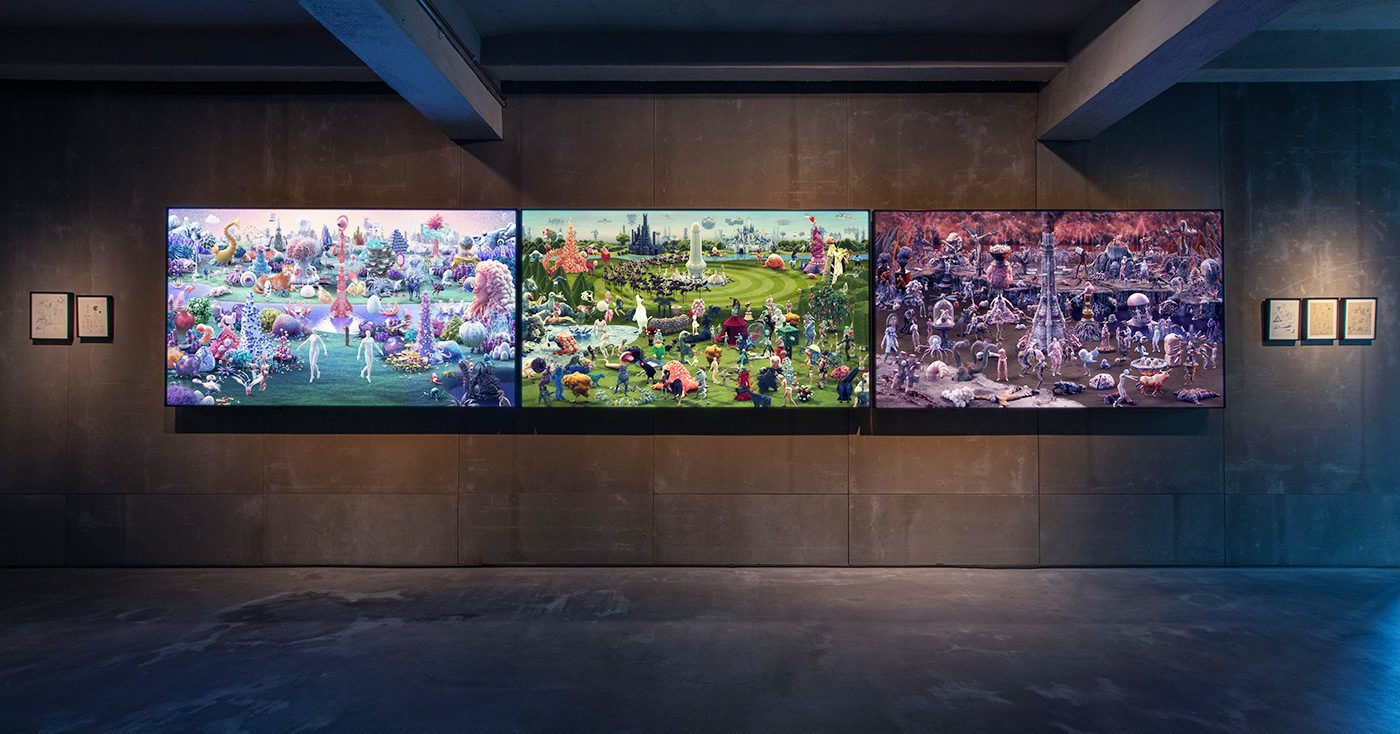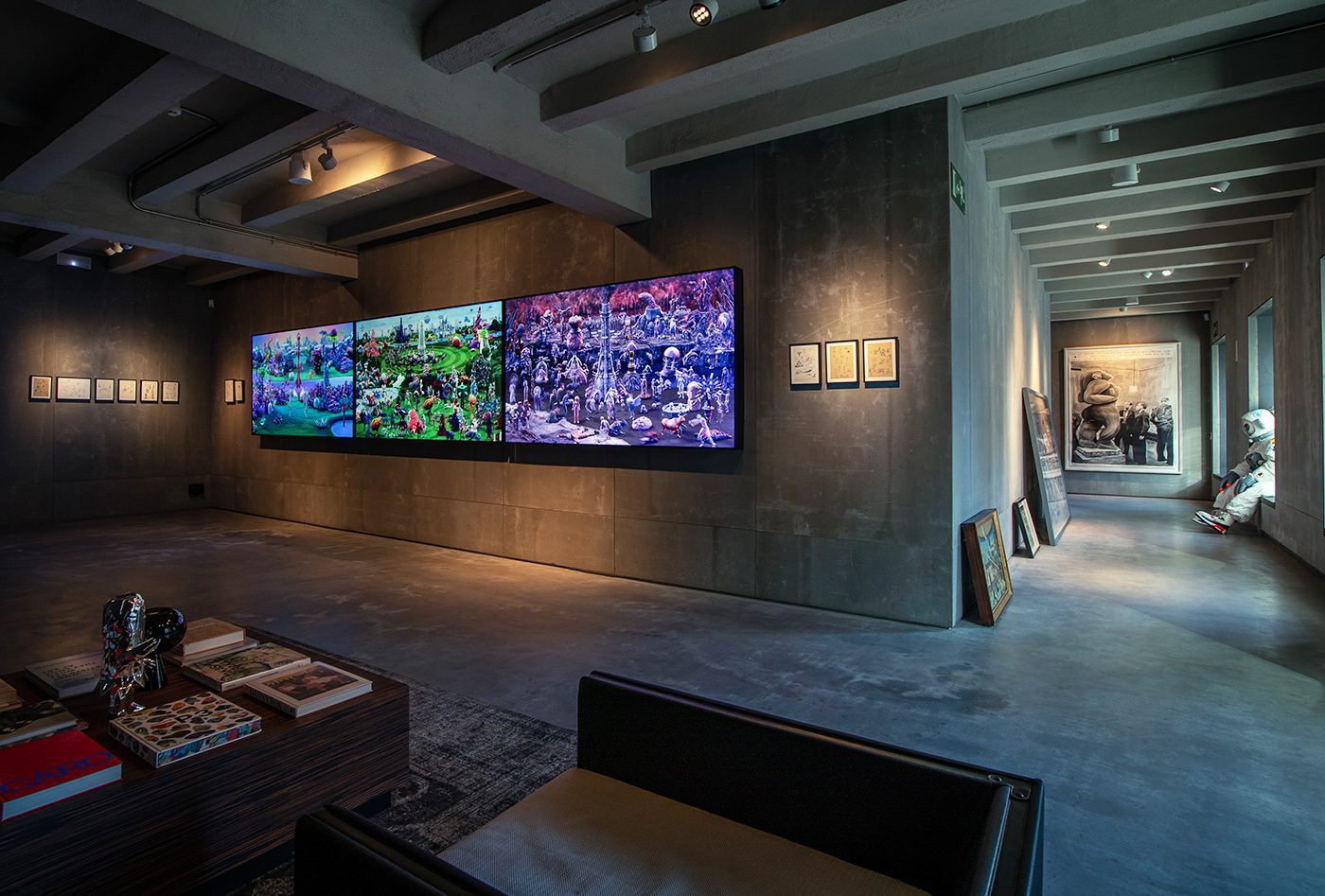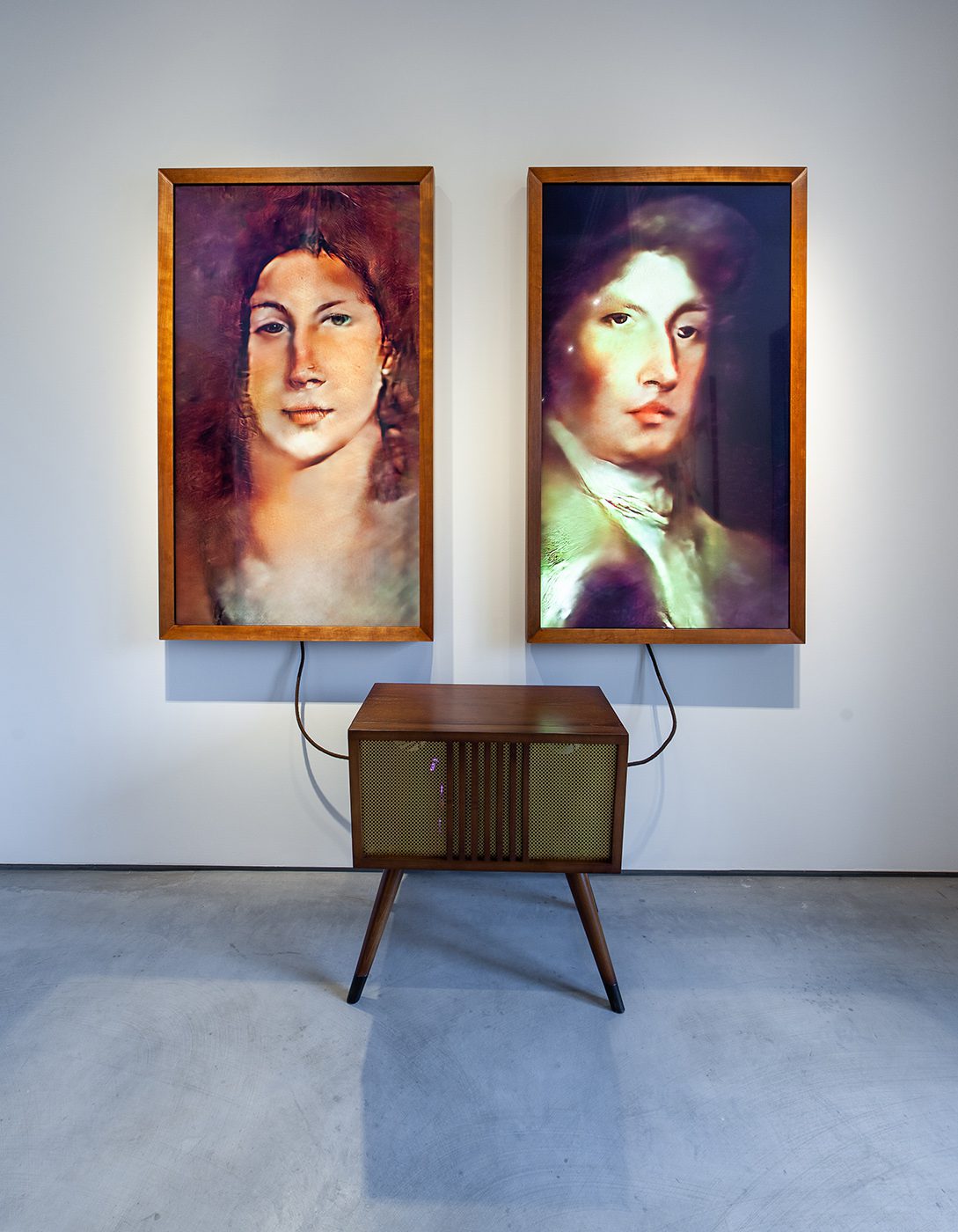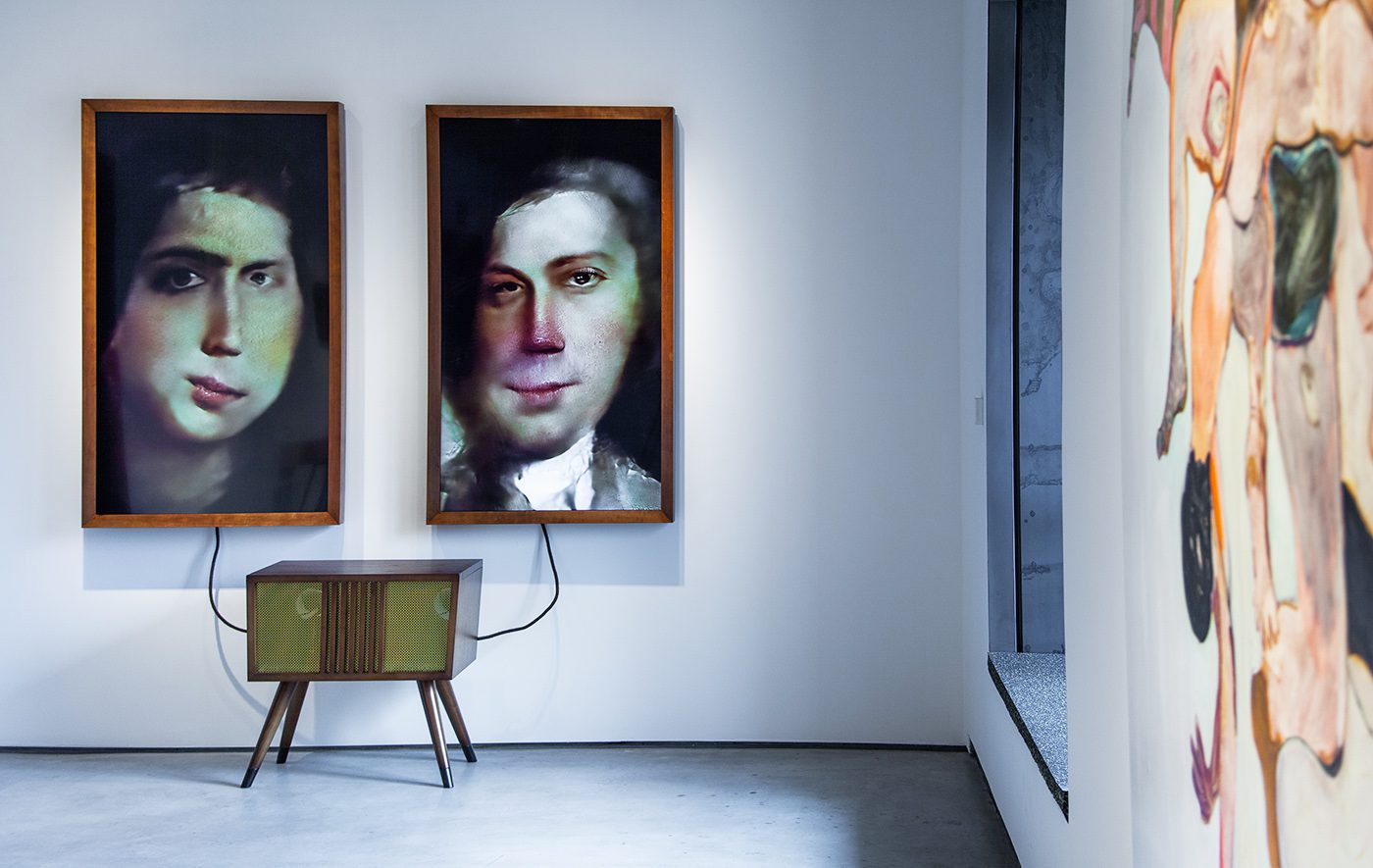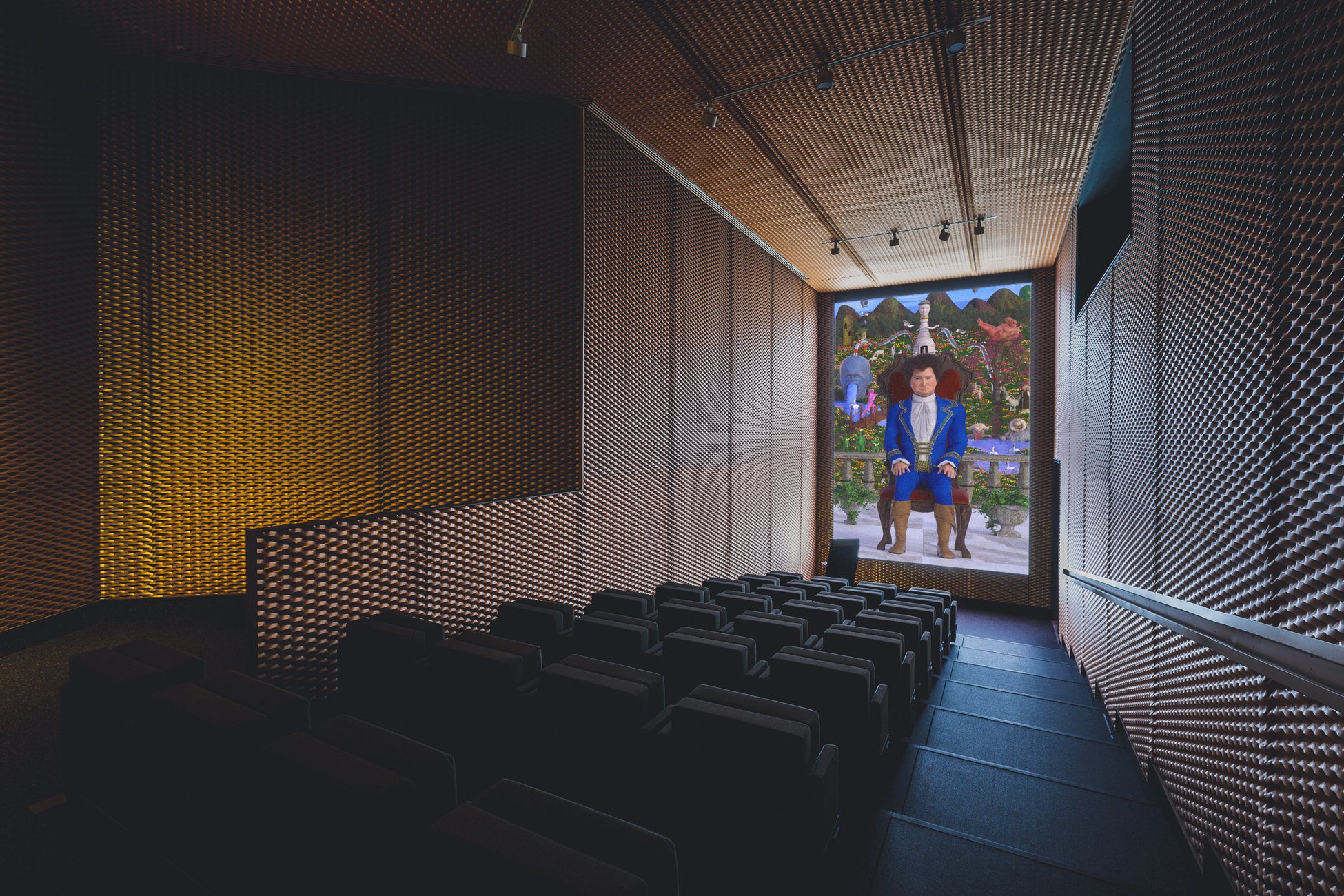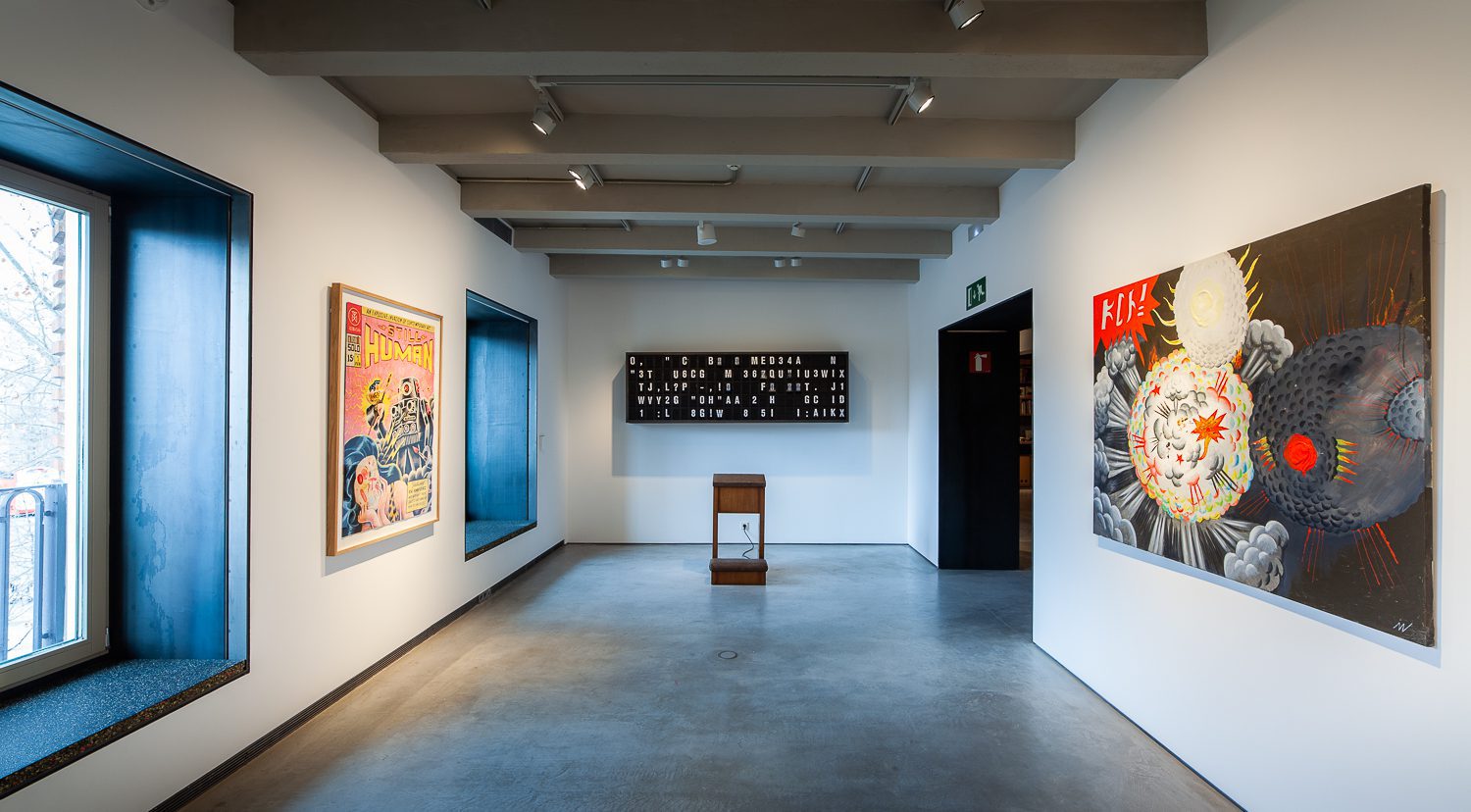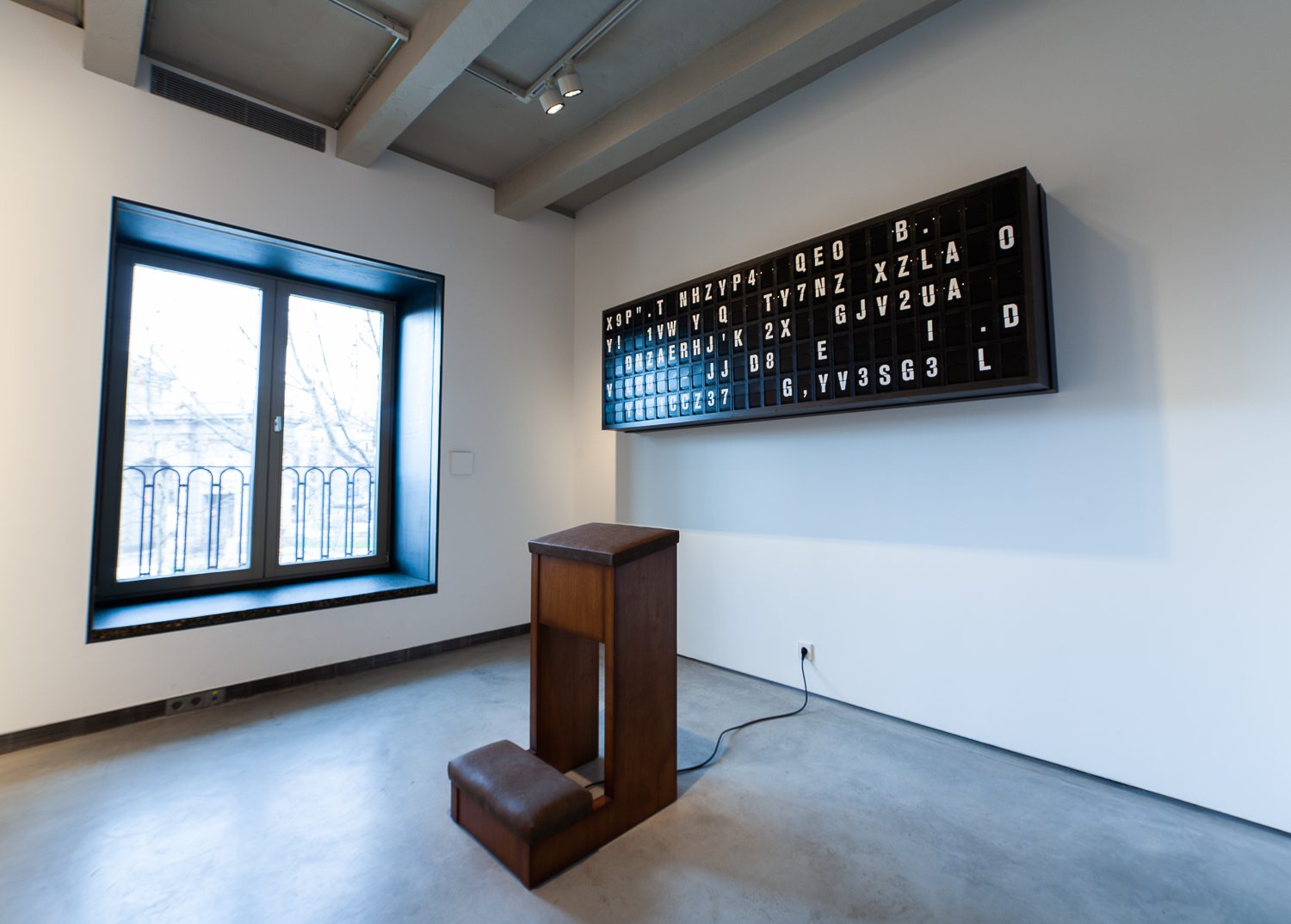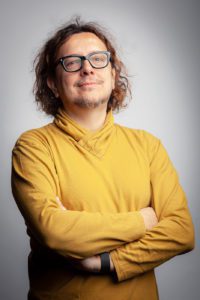
Óscar Hormigos
Talking to Óscar Hormigos (Madrid, 1973) could be considered as a journey to the future: art creation through Artificial Intelligence in real time, ‘crypto art’ sales through digital platforms, evolution of generative art… But nothing is further from the truth: the future is already here and it is presented within Contemporary Art with an infinite range of forms, textures and most of all tools that new technologies provide to the artists. Entrepreneur from the early days, his adventures with his partner and friend David Cantollá, collector and founder of Colección SOLO along with his wife Ana Gervás, began in 2010 when they created the Wake App! application under The App Date project. Shortly after, he founded the virtual reality project incubator The VRain and today Hormigos is Managing Director of the Onkaos program within Colección SOLO, from which they represent and support the work of ‘new media’ artists, and which he combines with his task as Development Director at the Collection. Codes and algorithms have become the new working tool of contemporary artists who play with augmented reality, sound art or Artificial Intelligence and that spaces like SOLO Collection, interested in new artistic narratives, welcomes to tell the story of our time through the contemporary scene.
How does Onkaos emerge within Colección SOLO?
When David Cantollá and Ana Gervás started the collection project, they did it also introducing digital artworks from the beginning. They began by understanding that in their concern to contribute to the artists’ careers through their role as patrons, in the case of ‘new media’ artists, there is the singularity that these artists had greater challenges. Not only did they have to move forward with their different vision, but technology also brought with it challenges in terms of R+D, other strategic ones… A more specific focus was needed looking over this type of artist. Onkaos is part of Colección SOLO, but we have given it a different name because we are taking on other roles and it is good for us to disassociate ourselves.
What peculiarities have you found in this market?
Besides the challenges of strategy or R&D, we recognized the difficulty of access of this type of art to the art market, to the galleries… It is not easy to collect digital art, many doubts arise about maintenance, durability… It made sense that Onkaos could act as an agent for the artists with this idea of helping them in the whole process that goes from providing them with financing, to helping them with the marketing strategy, in legal matters, and even conceptualization.
What does the ‘new media’ artists terminology includes?
They are artists who use technology and fall into a category of digital art. However, it seems to us that more than “digital” terminology it should be used “new technologies” because digital art remains a bit old fashion when talking about some technologies in comparation to new media. In the field we are working on right now we cover digital art but including Artificial Intelligence (AI), extended intelligence, sound art and now we are getting into the world of crypto art. It is such a new field of action that more broad and generic terms are needed to be able to act as an umbrella of all the fields that can get under it. It seemed to me that the most correct way for us to refer to it was simply to talk about “technology” and “new media”.
‘The Garden of Earthly Delights’ by Smack
‘The Garden of Earthly Delights’ by Smack at Colección Solo
It seems there are no limits in the alliance between art and new technologies, we are always going to find something that goes one step further. However, art and technology have been going hand in hand throughout History. Does the entry of Artificial Intelligence (AI) mean one more turn of the screw?
Technologies are inherent to artistic creation and innovation, and new technologies have been part of Art History since the beginning. Technology has always transformed the way of understanding the medium. In fact, when talking about AI, a good comparative example is when we talk about photography. Mario Klingemann, [one of the artists with whom they work in the field of new media and artificial intelligence in Onkaos], is asked repeatedly ‘how is it done’, ‘how does the machine work’. I can imagine photographers in the nineteenth century having to resolve the same doubts. But we are talking about an artistic proposal, when you see a work you don’t question how this enamel is applied or how the artist uses the brush. It took society almost a hundred years to have this artistic consideration towards photography, the gaze was not given value, it was put on the machine.
I suppose it is the result of curiosity or lack of knowledge about what it’s new?
The fascination that technology produces in us makes us lose the focus of what is really relevant, which in the end is whether that work is proposing or making you feel something. If what you really see of the artistic proposal moves you. I understand that this is a normal curiosity, but we have had to deal on many occasions with issues of communication with the artists we work with, in which journalists question “if the real value is in the machine”.
Where do you argue that the focus lies?
The real value and focus should be on the artist. We have a humanist vision in the understanding of art, we put man in the center. As Klingemann says himself, the code or the algorithm is his brush, he “paints” through codes and uses technology because we are in the 21st century, as simple as that. Technology should not be seen as more than a tool at the service of the artist and the true value is the artist’s use of the tool. We are very careful to count on the artist in this process of explaining the work rather than talking about the mechanism of AI, for example.
In mid 2019, Sotheby’s auctioned “Memories of Passerby I” by Mario Klingemann, the first time ‘live’ AI was taken into auction, which would mark a before and after in the art world.
I like to think that we have taken part of the History of Art. It is a milestone that will probably become even more important over the years. Thinking about what will happen in the next few years thanks to the use of AI has only just begun. It was the first time that an autonomous piece was auctioned, the first time that a “living” AI work was generating art in real time.
‘Memories of Passerby’ AI work by Mario Klingemann
What was the role of Colección SOLO and Onkaos upon the arrival of this piece by Mario Klingemann to Sotheby’s auction house?
To give some perspective, before working with Klingemann we knew Mario’s work through his Twitter account. We made him a formal invitation to come and see the Collection and with his arrival a very good atmosphere was created. He told us that he hardly had any exhibitions at that time and that he had a piece at home that he would really like to see exhibited in an art space. It was the autonomous machine trained by him that today is “Memories of Passerby”. We liked the idea of having a machine that in real time was creating art in an infinite way without ever repeating or copying itself and we tried to see what the limitations were that prevented him from doing so. It was not only to give him the money to buy a graphic card to start it up, but to participate in the conception of the piece itself. There was a dialogue with very interesting proposals in between the two parts. It was out of this conversations that arises the idea of framing the screens and adding the furniture piece that comes with the machine. Our work at Onkaos continues with the idea that this can later be taken into a museum and that this piece of work can participate in the world of art. Turning it into something museum worth value. After that, Sotheby’s Spain sent it to their International wing and we were happy to see them to decide to auction it off in London.
Is it a unique piece?
In the world of new media it is common for pieces to come out in limited editions, considered unique, and in the case of this particular one, three were made, with its three pieces of furniture, frames and complete installation. One was bought by the Colección SOLO, another was auctioned at Sotheby’s and the third one was sold to an English collector. There is a fourth, the ‘artist proof’, which is the one that moves around in loans and museums. Last year we closed up to eighteen exhibitions with him and I’m talking about the Hermitage in St. Petersburg, or Pompidou in Paris… A first level curriculum that has catapulted Mario to participate in a circuit of museums and proposals that are growing more and more.
What new challenges are posed by the creation of digital art pieces when we talk about the certification of the work and the maintenance of its authorship?
It is true that in the digital case there is an appearance of greater ease of copying, but this does not have to be the case. In fact, once again, technologies are helping to provide greater guarantees. I think that at institutions, fairs or collecting level, practices are super careful and I never heard of cases where people abuse or manipulate that kind of thing. It would be unthinkable for a museum to have an illegal copy of a Bill Viola video, for example, the same way it’s unconceivable that the classic artworks exhibited at the Prado Museum were not original. More and more certification technologies are appearing like the one we use, Blockchain, through the Verisart platform. It’s like a cloud technology that guarantees that it is impossible to corrupt or lose the trace to authenticate a work. It’s the same technology on which the bitcoins and the crypto-currency are based, it is unhackable.
Digital work by Smack
“King of life” by Cool 3D World
What’s next in the world of art and new media?
I anticipate that what we are experiencing in the world of AI is just the beginning. In the last months there has been a revolution with language, it is not only at the image level but a new algorithm has appeared, the GPT3, which has revolutionized the capacity of creation with language. With the previous algorithm, the GPT2, we have a new installation by Mario Klingemann that now can be seen in the Collection called “Aproppiate Response”. Now Mario is exploring those new territories and new projects are being created that have to do with the capacity of the machines to generate content and use language.
‘Aproppiate Response’ at Colección SOLO
‘Aproppiate Response’ by Mario Klingemann
Towards what direction is now Onkaos looking to?
In addition to these new advances in AI, crypto-art has been around for years, but now there are platforms that are monetizing it for the first time. We are experimenting in a platform called Superrare where we have put up to sale four pieces by Mario and all four have been sold in just one week. The novelty here that now seems appealing is that at today’s exchange rate with this currency in a week can go up or down.
We are also entering the world of ‘sound-art’. We have just launched the ‘Pow SOLO Awards’ with a first place prize of 10,000 euros together with the Dutch collective Powland Network Powcademy dedicated to the promotion of sound art. The winner was the Spanish artist Enrique del Castillo.
In addition, with artists like Smack we are now working on new things related to generative art [art created through the use of autonomous systems]. They worked on CGI, computer generated images, and although generative art is not new, it is very interesting to see how those technologies that come from the world of video games like Unity are integrated into art to tell another kind of narratives and language inherited from the behavior of video games. Crypto art, sound art, artificial intelligence… each one is a universe by itself, but the interest in the new narratives is very much linked to the history of Colección SOLO, which in the end wants to tell the history of our time, of Contemporary Art.

